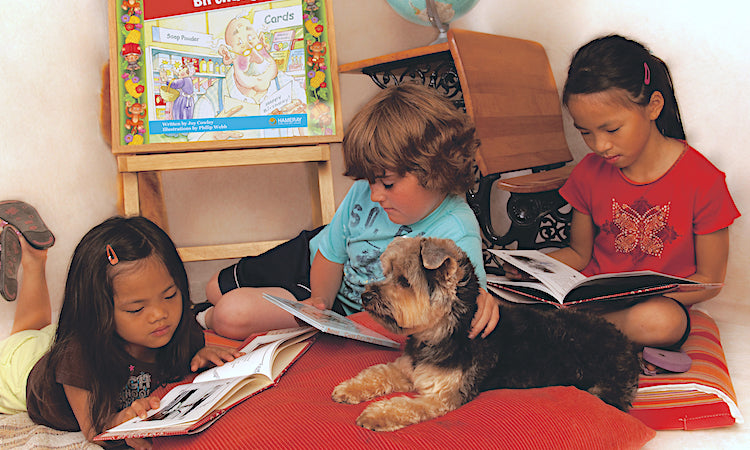By Nancy Brekke, Reading Interventionist, Guest Blogger
If you first acknowledge and build on the strengths of students, their confidence will be an asset to leverage in the classroom. When students feel confident, they will decode unfamiliar words and will look forward to the challenges and excitement of a new book. After your students gain confidence, you can help them practice reading skills and literacy strategies that they need to work on. Continue reading for helpful tips that help striving readers build confidence.
When I first met Adeline, she was a shy first-grader, and she was not interested in reading at all. She could only identify six letters and knew five letter sounds. Adeline already knew she was far behind her classmates in reading. She stated that her parents never helped her with letter learning or reading at home. She was often scared to try to identify the letter names or sounds because she was afraid of being ridiculed by her classmates. She kept saying, “I can’t do this.”
As a reading interventionist, I was fortunate to work one-on-one with Adeline. I knew that the first thing I needed to do was to get to know her and develop a relationship with her to build up her confidence. After talking about our interests, we found we had a shared love of dogs, and each of us had a pet dog. We spent time talking about our dogs, and I read her dog stories.
Eventually, Adeline began to feel comfortable with me, and her shyness slowly disappeared; in its place, I noticed a more confident Adeline. Here are five very effective ways for you to help build confidence in striving readers, and to ultimately help them develop a love of reading.

- Develop a relationship with your students. Find out about their interests, families, pets, hobbies, favorite foods, etc. If your students love dogs, an engaging narrative text to read together is Max, Our School Dog. Young children relate to the colorful photos of children their age in the book. As your relationships develop with your children, they will begin to feel more comfortable with you, which will help them feel more willing to take more risks as they read unfamiliar books.
- Have students dictate their own stories to older students or adults. After the older student or adult writes down the story, they can read the story back to the child. Then the child reads their story aloud. Finally, the child can illustrate the story.
- Have students read to a younger child, a pet, or even a stuffed animal. A very fun informational text to use for this is Chomp! Your students will love the fun, bright, colorful photos of the animals in the book. Their confidence will be boosted because they should be able to easily read this book on their own.

- Have kids follow along with you as you read aloud a big book. The Wishy Washy Ice Cream big book works great for this because you can trace your finger under the books simple sentence structure as you read the book orally. The children can join in the reading if they are comfortable, but don’t force them to. They may begin to fill in words they know. Then read the book aloud a second time. This time, the students may be confident enough to read along with you.
- Have children echo read what you read. You can do this by reading a sentence and then have students repeat it. As they become more comfortable and confident, increase the number of words you read until you read a whole page. Again, have the students echo read what you read. Modeling reading fluency with expression will help struggling readers with their fluency. A great leveled guided reading book to use for this activity is Hide and Seek.
Building your students’ confidence will be so beneficial for them, and it will be fun and rewarding for you to see and hear them blossom into eager, excited readers who develop a lifetime love of reading! Be sure to visit our blog soon for more ideas to help your students.














































![6 Fun and Easy Activities to Practice Sequencing [Grades K-1]](http://www.hameraypublishing.com/cdn/shop/articles/Red_Typographic_Announcement_Twitter_Post-5_bf1ae163-a998-4503-aa03-555b038d1b76_600x.png?v=1689961568)
![Leveraging Prior Knowledge Before Writing and Reading Practice [Grades 1–2]](http://www.hameraypublishing.com/cdn/shop/articles/Red_Typographic_Announcement_Twitter_Post-4_600x.png?v=1689961965)




